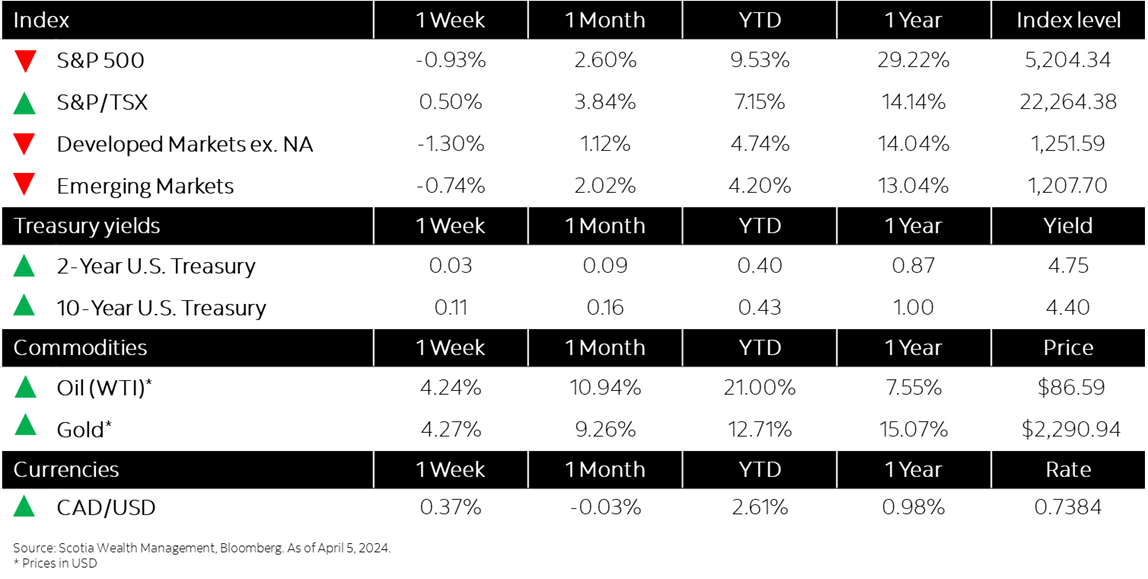
Market Watch: April 5
This week’s highlights
- Markets close broadly lower despite late-week rally
- Stronger-than-expected jobs growth drives rise in sovereign yields
- Canadian factory PMI edges up to 11-month high in March
- Powell still sees room for the Fed to cut rates this year
- Eurozone inflation cools, setting stage for rate cut
- In the news: EV transition slows as automakers dial back production, deliveries
Week in review
Markets close broadly lower despite late-week rally



